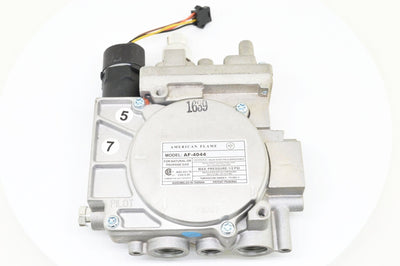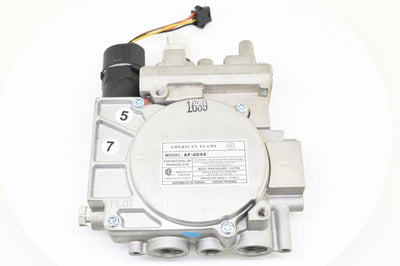Will the blower increase the heat output of our fireplaces
Will the blower increase the heat output of our fireplaces?
Struggling to get enough warmth from your fireplace? Research shows that a blower can potentially boost your fireplace's heat output. This comprehensive guide will explain the science behind how fireplaces and their blowers work, and whether investing in one could turn up the heat for you.
So are you ready to learn more about taking control of your home heating system?.
Key Takeaways
- A fireplace blower can boost the heat from your fireplace. It works by taking in cool room air, heating it up over the firebox, and pushing it out to warm your home.
- Different types of blowers are available for different types of fireplaces. Options include universal fans, forced air kits, gas stove blowers, woodstove fans and more.
- Fireplace blowers work with principles of conduction, convection and radiation to distribute warmth effectively throughout a space.
- Installing a blower can improve energy efficiency and reduce heating costs. These benefits outweigh potential concerns about noise levels created by some models.
Understanding Fireplaces and their Heat Output
Fireplaces come with various heat output range, greatly impacting their efficiency and utility. Many factors determine a fireplace's overall performance, from the type of fuel used to the model and design.
Wood burning fireplaces yield cozier and more natural warmth, while gas fireplaces offer consistent heating.
The rule-of-thumb for calculating the heat output is simple: one cord of seasoned hardwood releases about 20 million British Thermal Units (BTUs). A BTU is a traditional unit of energy equal to about 1,055 joules.
It takes around 50-60 BTUs per square foot to adequately heat a room in harsh climates. Some wood-fired units can produce up to 80,000 BTUs an hour; however, only a portion is usable as many escape via chimney during combustion.
The heat loss issue also plagues gas fireplaces despite their high-efficiency ratings because unsealed variants lose heated indoor air through drafts even when not in use; therefore minimizing this inevitable loss becomes paramount - leading us towards considering adding blowers.
Furthermore, examining your household air dynamics can help understand how well will your fireplace distribute its warmth throughout your space: Stack Effect means warmer air rises above colder ones creating noticeable temperature differences between upstairs and downstairs or closer vs farther rooms from the fireplace source.
Lastly sometimes installing glass doors on masonry systems proves beneficial by reducing parasitic heat transfer loss thus maximizing radiant benefits within the hearth room itself without resorting immediately towards blower option.
While understanding these aspects may seem daunting at first glance maintenance-friendly options like UV radiation resistant materials or creosote build-up preventive models make decision-making easier - resulting not just higher degree Fahrenheit but also increased quality life year-round!
The Concept of a Fireplace Blower
A fireplace blower is a device designed to enhance the efficiency of your fireplace by dispersing the heat produced in a more controlled and even manner throughout your home. Understanding how it works, as well as its different types, can help homeowners maximize their heating systems.
How it Works
A fireplace blower operates by drawing in cool room air from one side, heating it up as it passes over the hot firebox, and then pushing out the warm air through the other side into the living space.
This process creates a continuous flow of warm air around your home using forced-air mechanisms. It is an efficient way to distribute heat evenly across large spaces.
The invention of thermostatically controlled fans has made such blowers more effective than ever. These fans turn on when they detect that the fire has reached a certain temperature and switch off when it cools down below a set level.
Thus, both maximization of your fireplace's heat output and energy saving are ensured simultaneously. The efficiency further improves if you have installed tube heater grates or fireplace glass doors which can prevent excess heat loss via radiation.
Types of Fireplace Blowers
Fireplace blowers come in a variety of designs to suit different types of fireplaces and their specific heating needs. Here is an overview of the major types:
- **Universal Fireplace Fan**: An adaptable model, this fan can work with a range of fireplace types. It's designed to circulate warm air efficiently throughout the room.
- **Dual Cage Universal Fireplace Fan**: This type operates similarly to the Universal Fireplace fan but includes twin fans for double the power and efficiency.
- **Forced Air Kit**: This blower kit directs heated air away from the fireplace, preventing overheating and improving overall dispersion.
- **Gas Stove Blower Fans**: Specifically designed for gas stoves, these fans help distribute heat more evenly than convection alone can deliver.
- **Woodstove Blower Fans**: For wood-burning units, these fans improve heat output by pushing hot air out into the room rather than letting it rise straight up.
- **Prefab Fireplace Blower Fan**: Meant for prefabricated fireplaces, this type of fan focuses on increasing heating efficiency in large pre-made units.
- **Thermostatically Controlled Fans**: These sophisticated variants automatically adjust fan speeds based on temperature readings, delivering optimal performance at all times.
- **Tube Heater Grates**: A unique design that integrates tubes in series with the blower ensures better heat distribution across larger spaces or multiple rooms.
- **Free-Standing Stove Fans**: Designed for standalone heating appliances like wood or gas stoves, these fans focus on providing broad area coverage and rapid temperature increase.
Will a Blower Increase the Heat Output of Your Fireplace?
The heat output of your fireplace can indeed be elevated with the addition of a blower. In essence, a blower works by circulating the warm air throughout your room rather than letting it rise to the ceiling.
This process allows for a more evenly distributed heat within your space resulting in enhanced comfort during cold weather.
Installing a blower into gas fireplaces specifically can lead to an increase in efficiency up to around 80 percent. It's not just limited to gas fireplaces either; wood-burning ones also see substantial benefits from integrating blowers into their system, as mentioned earlier.
Furthermore, investing in this appliance could save you money down the road. Utilizing a blower alongside your existing heating arrangement might help cut hundreds off your yearly energy bill due to less waste being produced and lower operating costs associated with running blowers when compared to standard home furnaces.
Not only do they boost performance but also contribute towards responsible energy usage and conservation in our homes.
The Science Behind Heat Transfer in Fireplaces
Dive into the fascinating principles of conduction, convection and radiation that govern how fireplaces distribute warmth throughout a room - essential knowledge to answer if a blower can truly increase your fireplace's heat output.
Stay tuned for an intriguing exploration of these scientific concepts!
Conduction
Conduction plays a remarkable role in transferring heat within your fireplace. It's the process where heat travels through solid materials, such as the metal parts of your fireplace, and gets transferred to nearby objects.
Imagine placing a metal spoon into a pot of boiling water; the handle heats up because it conducts heat from one end to another - that's conduction at work.
In terms of fireplaces, conduction happens when heat producers like wood or gas burn and release radiant heat onto surfaces around them. The blower fan amplifies this process by forcing warm air off into the room rather than letting it rise naturally by convective air currents.
So in essence, not only does your fireplace generate warmth via radiation but also significantly increases its heating efficiency with conductive processes aided by built-in blowers!
Convection
Convection plays a crucial role in fireplace operation. It's the fundamental process behind heat transfer, keeping your home cozy and warm. The science of convection revolves around movement of heated fluid, like air or water.
In a fireplace scenario, when fuel burns- whether wood or gas - it heats up the surrounding air. This heated air then rises to occupy upper spaces while cooler air descends to take its place near the fire.
This continuous cycle creates a natural current that distributes warmth throughout your space effectively and efficiently, providing the inviting glow we associate with our favorite firesides! A blower assists this process by pushing more warm air out into the room at a faster pace than naturally possible alone, hence optimizing heat output from your fireplace installation.
Radiation
Radiation plays a vital role in heat transfer within fireplaces. It's the thermal energy emitted by burning wood or gas, much like the sun emits UV radiation to warm our planet. Radiant heaters employ this method as infrared radiation directly warms up objects in its path, including people and furniture, without heating the air first.
This form of heat distribution is similar to holding your hand over a pot of boiling water where you can feel the warmth radiating upwards. However, wood-burning inserts with catalytic combustors are notable for enhancing radiant heat production while minimizing parasitic heat transfer loss via chimney draft.
The Role of a Blower in Heat Transfer
A blower plays a crucial role in enhancing the heat transfer process of a fireplace. In its operation, it pulls cool air into the fireplace and pushes out warm air, significantly increasing the heat output.
The fundamental science behind this lies in convection, where heated air rises naturally due to its lower density compared to cooler air. A blower amplifies this natural mechanism by creating room for more cold air to occupy.
The efficiency of convective heat transfer is further improved with the use of a fireplace blower fan. This gadget aids in circulating extra warmth around your hearth room or even between rooms, ensuring that every corner receives an equal amount of heated air.
Furthermore, unlike radiant heaters which rely largely on infrared radiation, blowers push warm currents throughout space more swiftly than relying solely on natural conduction or radiative transfer methods.
Pros and Cons of Using a Fireplace Blower
Exploring the benefits and drawbacks of using a fireplace blower, we delve into factors such as energy efficiency, potential for noise disturbance, and implications on heat distribution.
Efficiency
Fireplace blowers dramatically improve the efficiency of heat distribution in your home. By pushing the warm air created by your fireplace out into the room, a blower ensures that more of this heat is used to warm up your space instead of just rising up and out through your chimney.
Faster than convective heat transfer alone, a blower fan can make sure that even larger rooms receive ample warmth from your fireplace. Most importantly, increasing the efficiency with which the generated heat is distributed helps reduce energy bills over time.
Fireplace blowers thus act as helpful tools not only for winter comfort but also for household economy. Some fireplace types like wood or gas inserts even allow adding a blower kit for enhanced functionality and improved warmth output.
Noise considerations
Fireplace blowers, while highly effective in circulating warm air around the room, can sometimes produce noticeable noise. The level of sound emitted depends greatly on the specific model and manufacturer.
Peaceful environment enthusiasts often place a significant emphasis on quiet operation when selecting their fireplace blower. While some homeowners may not be disturbed by the operational sounds, others might find them bothersome.
Therefore, it's crucial to consider your personal preferences and comfort when evaluating potential noise levels produced by various blower models.
How to Choose the Right Fireplace Blower
Begin by identifying your fireplace type, be it gas or wood burning. Understand the design of various blowers and how they suit different fireplace types. Consider factors like noise levels, energy efficiency, and ease of installation while evaluating blower options.
Lastly, consider maintenance needs and warranty offerings before making a final choice on a fireplace blower.
Gas and Wood Fireplaces
Gas and wood fireplaces differ greatly in their functionality and impact on heat output.
- Gas fireplaces provide a convenient, clean - burning option for homeowners.
- They're known for efficient heating and low maintenance.
- They use natural gas or propane as fuel, eliminating the need to chop or purchase wood.
- Many models of gas fireplaces come equipped with built - in blowers which enhance heat distribution.
- One significant advantage of using gas fireplaces is the ability to control the heat output easily via thermostat controls.
- Wood - burning fireplaces often feature a classic look and feel that appeals to many homeowners.
- They typically require more maintenance than gas options due to ash cleanup and chimney upkeep.
- The addition of an auxiliary fan can increase the heat output of a wood stove room, effectively forcing warm air around the space or into other rooms.
- Wood-burning inserts with catalytic combustors produce more home-friendly heat and less excess warmth up the chimney, making it more efficient than traditional open-hearth models.
- Adding a blower to this type of fireplace is an effective way to improve heating capability further by distributing warm air more evenly throughout the room.
- Wood-burning stoves are carbon-neutral since trees absorb carbon dioxide as they grow, which is released when wood burns.
- Conversely, natural gas release carbon dioxide into the environment contributing slightly to greenhouse gases.
Matching Your Fireplace Type with the Right Blower
Choosing the right fireplace blower is critical to increasing the heat output of your fireplace. Here are key factors to keep in mind:
- Identify your fireplace type: Gas and wood fireplaces have unique needs. Wood stoves typically require a larger blower, while gas fireplaces can operate efficiently with smaller models.
- Consider the size of your home and rooms: Bigger spaces need more robust blowers for better heat distribution.
- Look at the model-specific blowers: Some models have specific blowers designed to match them, ensuring optimal performance.
- Consult with a certified technician: Engaging a professional will ensure safe and efficient installation while raising the heat output potential.
- Explore blower features: Options like thermostat limit switches, timers, or remote controls can boost convenience and efficiency.
- Evaluate the power source: Ensure you have reliable electricity access if you choose an electric blower fan as opposed to other types, like forced-air kits.
- Think about noise levels: While blowers increase heat output, some may also generate significant noise levels worth considering for comfort.
- Examine warranty options: A good warranty indicates manufacturer confidence in product longevity and functionality.
Maintenance of Fireplace Blowers
Maintaining fireplace blowers effectively requires some simple steps:
- Regularly schedule inspections and cleanings: It is crucial to remove dust, dirt, and pet hair that can accumulate and hamper the function of your blower.
- Apply periodic lubrication: This helps prevent wear and damage while improving efficiency.
- Check for signs of wear or damage: Early detection can mean the difference between a minor repair and a major replacement.
- Replace old parts promptly: Keeping all components in top shape will ensure the longevity of your fireplace blower.
- Keep the blower motor clean: Dirty motors can overheat, causing potential fire hazards.
- Insulate against excess noise: If the blower becomes loud or creates vibration, adjustments or repairs may be necessary.
- Seek professional help when needed: Although many tasks are simple enough for homeowners to perform, hiring a certified technician can provide peace of mind for more complex issues.
Conclusion
Adding a blower to your fireplace indeed amplifies heat output considerably. This option not only enhances the efficiency of your home heating system but also reduces energy bills significantly.
Despite potential noise concerns, the benefits far outweigh the drawbacks offering cozier winters ahead. Hence, it's worthwhile exploring different fireplace blowers available to find one best tuned with your specific needs.
FAQs
1. What is a fireplace blower and how does it work?
A fireplace blower or fan insert is a component of the home heating system installed in fireplaces, either wood inserts or gas insert models, to increase heat output.
2. Can installing a fireplace blower increase my fireplace's efficiency?
Yes, by improving the thermodynamics of wood-burning fireplaces and using conductive heat from combustion and convection processes; installing Fireplace Blower Fans can greatly enhance your fireplace's efficiency.
3. What are the advantages of using a blower kit for my wood stove replacement?
Your woodstove replacement fitted with a fireplace blower kit will aid in oxygen replacement while controlling speed through rheostats thus efficiently distributing warm air across large rooms.
4. How do I maintain my Fireplace Blower?
Fireplace maintenance includes cleaning convective air chambers and checking parts like ball bearings, sleeve bearings, high-temperature wiring to ensure your Fireplace Blower lifespan isn't compromised.
5. Is there any potential risk involved in having B-vent gas fireplaces without blowers?
While all types of gas fireplaces including B-vent ones provide clean-burning technology aided warmth; without an efficient Heat reclaimer like blowers you might miss out on optimal heat transfer efficiency.
6.What happens if there’s power outage -- Will our free-standing stoves still give off enough heat?
Even during power outage scenarios, Free-Standing Wood or Gas Stove equipped with adequate hearth appliances ensures sufficient heat but won’t distribute it as effectively throughout the room as when blowers are operational.
← Older Post Newer Post →




























